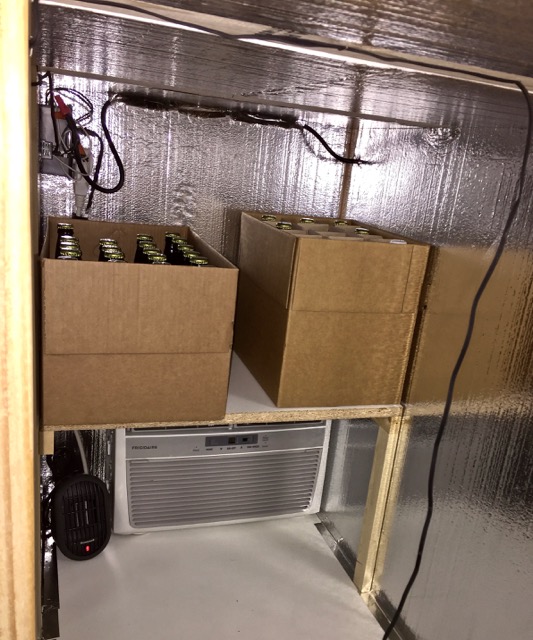View attachment ImageUploadedByHome Brew1484077072.204919.jpg
Wish I had a better shot of mine but it's awesome that the three of us had the same idea.
I have 1" rigid foam on the floor and 1.5" on the walls and ceiling of it. It's a three bay with 2" rigid insulation separating each bay. The way I have mine cooled is in a kind of series type setup.
I have my kegerator on the right hand side which blows are through a duct into the bottom of the right most bay, there is also a return duct. Inside this duct I have a computer fan hooked up to a temp controller which is attached via probe to a whatever I'm fermenting. This bay i use for lagers.
The middle bay has the exact setup as the first but retrieves its air from the right most bay. This bay is for ales.
The left bay I don't have ducted yet, it has a heating plate from mangrove jack, this bay I'm using to either do saisons or i sometimes need to do a sour mash which is done in a keg wrapped in a sleeping bag on top of the heating pad/plate.
On the floor of the chamber i used some material from my cabinetry shop that was purchased bythe previous employee. It is sort of like a white melamine (good to detect spills, and see leaks or whatever instantly) and on the back is a weird black rubbery fiber type stuff. I've never seen it before. It's only about 1/8 thick it has performed very well. Rigid foam can handle a lot of force when it's not applied from the edge of something, some guys tile over it with just a layer of plywood but I don't.
Just a word of caution, you often can't glue rigid foam with regular adhesive. Use PL foam/panel board if you can get it. I think no more nails has some also. When you caulk your joints be careful of what silicone you use also, however the bulk are fine.




